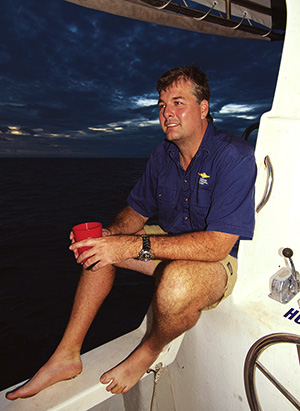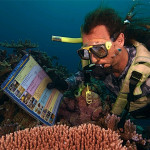
Lyle Squire Jnr , President
Keeping fish for display is a long held tradition. The earliest known aquarists were the Sumerians in southern Mesopotamia – modern Iraq – who kept fishes in artificial ponds at least 4,500 years ago. Records of fish keeping also date from ancient Egypt and Assyria. Indeed, pictures of fish are found in frescoes in Egyptian tombs.
Marine aquarium displays are relatively new but have formed an effective medium for learning about life in the sea. In his 1854 book, The Aquarium: an Unveiling of the Wonders of the Deep Sea, Philip Henry Gosse aroused public interest in aquatic life. With interest came increased knowledge and appreciation of our oceans.
Fast-forward to today and the ornamental fish industry is global in scale. The overwhelming majority of specimens are cultured freshwater fish species but marine displays have grown in popularity. These displays are typically mini-reef reproductions featuring live rock, corals, invertebrates and, of course, brightly coloured reef fish.
A plethora of publications and online forums assist hobbyists to understand the marine life in their care, including interaction with other species and their habitat. It is a hobby for enthusiasts and has launched the careers of many internationally recognised marine biologists and documentary filmmakers.
And literally hundreds of millions of visitors to public aquaria annually are amazed by the diversity of marine life on display accompanied by explanatory extension material that helps expand community understanding and appreciation of life in our seas.
Supplying the marine aquarium markets has created opportunity for income generation for coastal communities in various countries throughout the tropics where such opportunities are often limited. However, the manner in which some of these fisheries are conducted and overseen has raised questions about their sustainability.
The marine aquarium supply industry on Australia’s iconic Great Barrier Reef is different. It is conducted within a comprehensive framework of assessment, management and monitoring that includes compulsory periodic third party environmental assessment that ensures continuous improvement in environmental performance. Importantly, it operates within a vast network of marine protected areas.
Stewardship Action Plan 2013: Mitigating Ecological Risk in a Changing Climate is specially designed to complement fishery and protected areas management arrangements. It has been developed by industry in partnership with the government agencies that oversee it, world-renowned coral and fish scientists and the world’s foremost conservation organisation. The initiative enables industry to contribute in a purposeful and practical way to the ecological sustainability of the fisheries at the individual fishery practitioner level.
Pro-vision Reef Inc. is proud to present this initiative and we believe that we have established a sound blueprint for world-class aquarium fisheries.
Lyle Squire Jnr
President




